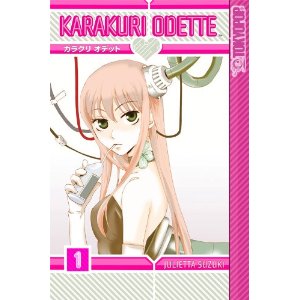I’m pleased to announce the next Manga Moveable Feast will be hosted here from January 16th-22nd. We’ll focus on Karakuri Odette, a great shoujo series about an android girl who wants to become more human.
I wanted to make this title the focus of my first time hosting the manga moveable feast because Julietta Suzuki elevates the android-girl genre, turning it into a series that is at times both sweet and philosophical. Suzuki’s a gifted cartoonist too, and the ways she subtly differentiates android Odette’s body language from her human friends is always a treat to see. Since it is well over a month away, you have plenty of time to add a volume or two of this series to your wishlists, or maybe pick it up with your holiday money. One of the nice things about this series is that it is fairly episodic, so even if you were to pick up one of the later volumes I think it would still be easy to enjoy the manga.
Here’s a sample first chapter on the Tokyopop site.
Here’s a sampling of reviews of the first volume from:
Comics Worth Reading
My old blog TangognaT
A Case Suitable for Treatment
About.com manga guide
And a bunch of review links on Manga Views.

Recent Comments